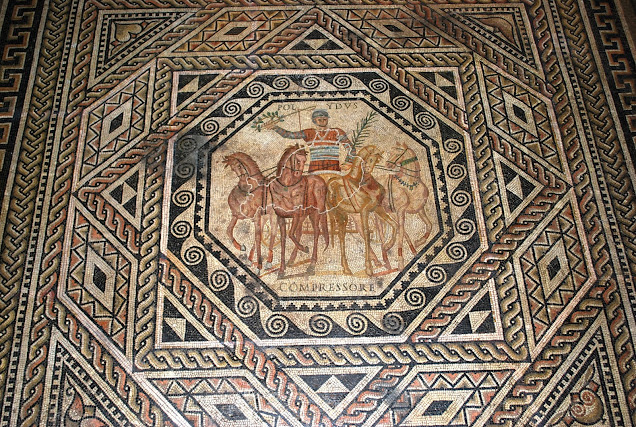May I see your tickets, please?
Theater performances were open to men and women, slaves and senators, but the composition of the audience would vary in accordance with the type of performance. Comedy and mime attracted a wider public because they dealt with themes from everyday life and were easy to understand. A tragedy's audience was more select, and mostly made up of those who were familiar with Greek culture. Although many people attended the theater, they were in a minority when compared to the crowds who attended the circus and the amphitheater. Compare modern football (Cristiano Ronaldo: €93 million) and theater, these days.
Spectators could not choose their own seats, which were arranged by rank according to their political, social and legal status. Their location had been regulated by Augustus. The rules contained in the Lex Ursonensis, which were applied to the Roman theater in Osuna, were probably similar to those governing the Caesaraugusta theater.
The seats of honeur in the orchestra (purple) were reserved for local senators (decuriones), priests, colonial magistrates, possibly the governor of the province and visiting magistrates and senators from Rome. Above them (red) sat the knights. The next section (orange and dark yellow) was occupied by colonists, residents (incolae), freedmen and visitors. The upper tiers (summa cavea: yellow) were reserved for women and slaves who had to stand unless there were any free seats.




Reacties
Een reactie posten